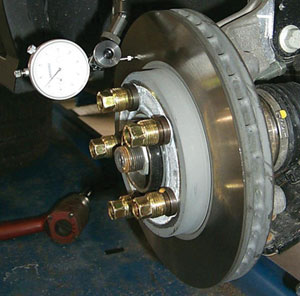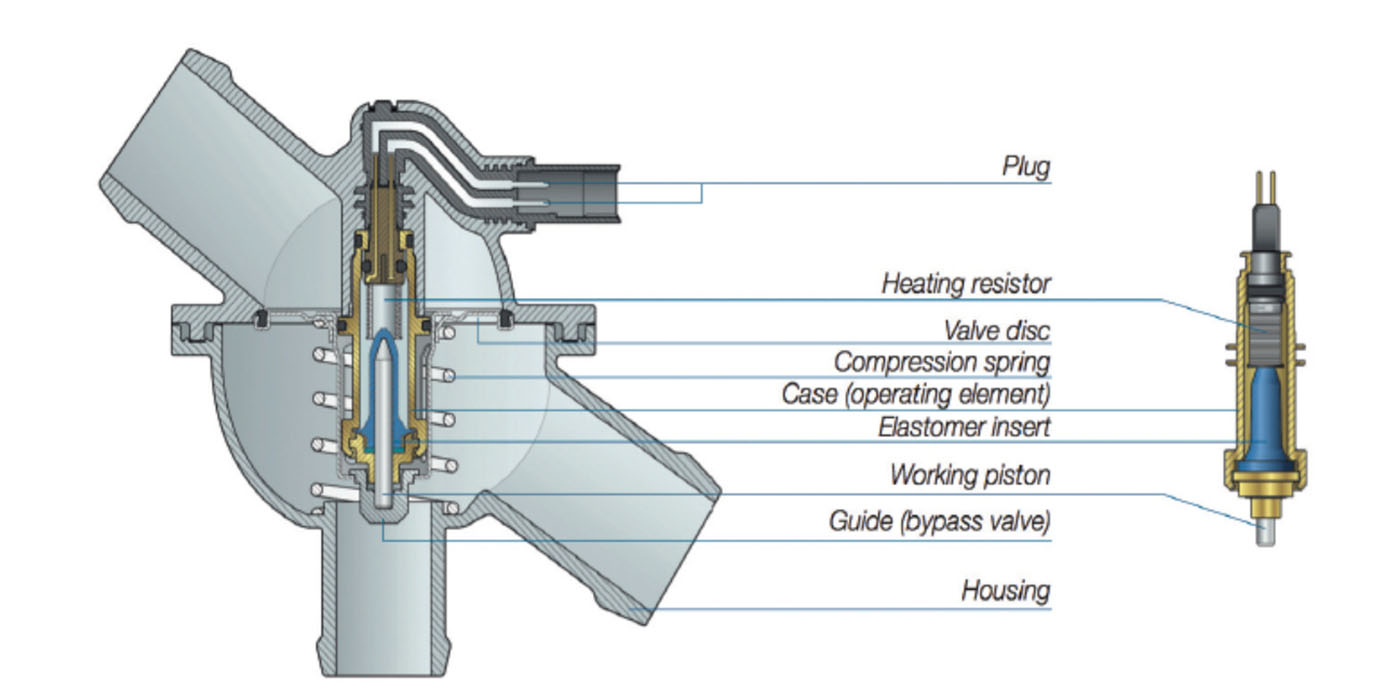By Daniel P. Carter
ACDelco
 The key steps during disc brake service include determining rotor refinishing or replacement, properly cleaning all brake components (including items such as hub, rotor and wheel mating surfaces), properly refinishing the rotor (if applicable), and properly reassembling the brake assembly using the proper tools and torque specification.
The key steps during disc brake service include determining rotor refinishing or replacement, properly cleaning all brake components (including items such as hub, rotor and wheel mating surfaces), properly refinishing the rotor (if applicable), and properly reassembling the brake assembly using the proper tools and torque specification.
Here are some tips to ensure a successful brake service and prevent vibration and brake noise. Always refer to the appropriate Service Information or latest bulletins for specific procedures. If servicing GM vehicles, for example, GM bulletin #00-05-22-022L is a good resource that updates and centralizes all of GM’s standard brake service procedures.
Rotor Refinishing
When it’s determined that a rotor must be refinished, use a brake micrometer to measure the rotor. Multiple measure points should be taken and the lowest measurement recorded. Reference the Minimum Thickness specification stamped on the backside of the rotor and the Discard specification in the Service Information before refinishing the rotor. Do not refinish new rotors or remove any special coating that may be applied on some ACDelco replacement brake rotors.
Clean all of the mating surfaces between the hub, rotor and wheel. Cleaning all mating surfaces and making them free of corrosion, burrs and other debris is critical and must be performed whether using an on-car or bench lathe refinishing procedure. Prior to making the cut when refinishing, install the recommended clip-on style disc silencer supplied with the lathe. Using the silencer will help prevent chatter from occurring during the cut.
After completing the refinish, sand both sides of the rotor for approximately one minute per side using 130-150 grit sandpaper to obtain a non-directional finish. Wash the rotor with mild soap and water or wipe it clean with ACDelco brake parts cleaner, part number 10-6012. Thoroughly cleaning the rotor will prevent the possible transfer of finite metal dust left as a byproduct of machining to the pad material, reducing the chance for squeaks or other noises to occur.
Do not clean the rotor with a brake cleaner solvent-based product.
Preventing Pulsation
Any time a brake rotor is refinished, measuring lateral runout (LRO) will help to prevent pulsation and customer comebacks. Pulsation is caused by brake rotor thickness variation, which is usually the result of excessive LRO or brake rotor corrosion.
Lateral runout is a measurement of the waviness of the rotor face. The GM specification for excessive LRO, for example, is more than 0.050 mm (0.002 in.). Excessive LRO occurs to a rotor when the brakes are not applied. When the vehicle is being driven, any high spot on the rotor rubs the brake pad once per revolution. Eventually, the high spot is worn down, resulting in a thin spot on the rotor (rotor thickness variation) and pulsation that is transferred through the brake pedal when the brakes are applied.
Rotor corrosion is another form of thickness variation. In cases where rotor corrosion is cosmetic, refinishing the rotor is unnecessary. More extensive corrosion may be the result of a build up, mostly on the rotor material surface, caused by a combination of corrosion, pad material and heat. In some instances, cleaning up this type of corrosion may require more rotor material to be removed than typical refinishing.
When measuring LRO, rotate and locate the point on the rotor where the lowest dial indicator reading is indicated. Set the dial indicator to zero. Rotate the rotor from the low point and locate the point with the highest dial indicator reading (the high spot).
In addition, index-mark the rotor and a wheel stud so that it is in the same position as it was prior to service.
If LRO is excessive, use Brake Align correction plates or refer to the appropriate Service Information to correct the lateral runout.
Installation Tips
Reinstall the rotors on both sides of the vehicle following these steps:
• Reinstall the calipers and pads. Use a thin film of ACDelco high temperature silicone grease, part number 10-4019, on caliper sides, rubber components and disc pad shims, which will allow the shims to withstand normal brake pad movement without damage and help dampen vibration;
• Pump the brakes to pressurize the calipers;
• Remove the lug nuts/conical washers (if installed for refinishing the rotors on the vehicle); and
• Install and properly torque the wheels.
It is critical to use the proper tools (torque stick or torque wrench) to torque the wheels to specification as referenced in the Service Information.
For more information on quality ACDelco brake components or training opportunities in your area, see your ACDelco representative or visit acdelcotechconnect.com.













